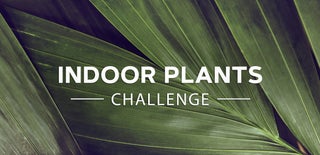Introduction: Easy Soil Moisture Sensor Arduino 7 Segment Display
Hello! Quarantine can be tough. I am lucky to have a small yard and plenty of plants in the house and this got me thinking that I could make a small tool to help me keep good care of them while I am stuck at home.
This project is a simple and functional way to test the moisture content of soil and display it without needing to have your Arduino connected to a computer. This means it can sit on the shelf with your other household tools and when its time to water the plants you can give them exactly as much water as they need!
The goal of this project was to be able to give it to my girlfriend so she could use it while we are quarantined at home and when I surprised her with it she was super excited and found it easy to use!
The worst thing you could do is water the your plants too much!
We learned quite a bit by using this regularly. While the top 1/2" appeared very dry, many plants were actually extremely moist under the surface and we learned abut the drainage on each of our plants through this system.
Good luck taking care of your plants I hope this helps! The end result is kid friendly and fun to use.
Step 1: Components Needed and Set Up
Hello! This project is a simple and functional way to test the moisture content of soil and display it without needing to have your arduino connected to a computer. The goal of this project was to be able to give it to my girlfriend so she could use it while we are quarantined at home. The worst thing you could do is water the plants too much...
We learned quite a bit by using this regularly, specifically about moisture levels below the top 1/2 inch of soil.
Components used in this project:
Single Digit 7 Segment Display
Step 2: The Code for the Project!
I am new to coding so I am more than aware that this is not the fastest way to write it but it made it simple to re-calibrate the project so that the range became meaningful.
If you are completly new to arduino, this program opens in Arduino IDE which is available for download for free here: https://www.arduino.cc/en/main/software
First Download the application then download and open the attached file. The program uses the Serial Monitor to calibrate as well as to check functioning. Note that you can only calibrate it when it is plugged into the computer not from the external power supply.
The most complex part was to make sure the values are relative to each other. Check comments in the code for explanation of how it worked best for me.
Attachments
Step 3: Hardware!
The wiring is a little bit complicated for the seven segment display but must be exactly as shown. There was no component for Moisture sensor but the Soil Moisture sensor is well labeled so this diagram should be a good explanation. Feel free to reach out with questions!
Step 4: Testing and Final Product!
Here are some videos of us testing the final product and some photos of the final product!

Participated in the
Indoor Plants Challenge











